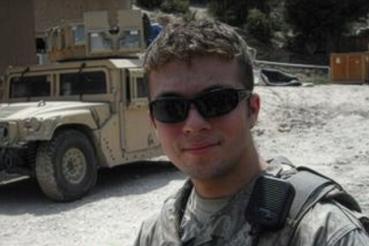The Road Home Program’s name embodies its central mission of helping veterans and their loved ones return to civilian life. However, an equally important part of our mission involves improving the health and well-being of active-duty service members so they can continue serving their country.
Jon Murphy, PhD, ABPP, a psychologist at the Road Home Program: The National Center of Excellence for Veterans and Their Families at RUSH, intimately understands the challenges of being an active-duty service member. Before joining the program in 2022, he served as a U.S. Air Force officer and then as an active-duty clinician in the U.S. Navy.
“A major challenge for active-duty service members is getting used to the nearly constant churn of people and responsibilities, which makes it difficult to establish routine and build connections,” Dr. Murphy said.
Because of challenges like these, the U.S. Department of Defense is facing the most difficult recruitment and retention environment in the past 50 years, according to the U.S. Government Accountability Office. Additional factors influencing people’s choices to leave the military include organizational culture, quality of life issues, sexual harassment and sexual assault.
The Road Home Program’s Intensive Outpatient Program, or IOP, equips active-duty service members who have experienced trauma with the tools they need to reconnect with their purpose for serving and, if they want to continue, their motivation to do so.
The logistics and advantages of receiving care
It can be difficult, if not impossible, to receive adequate mental health treatment in an active-duty setting. Shifting schedules, a shortage of mental health professionals, competing responsibilities and stigma are some barriers to care.
For an active-duty service member, there are typically three pathways to attending a program like the Road Home: having a lull between assignments, applying for personal leave or being identified for medical retirement.
In Dr. Murphy’s previous role as an active-duty clinician, he vouched for the efficacy of programs like the IOP in helping people receive the care they need to heal. “At the end of the day, we’re asking them to go into stressful, often traumatizing, situations and do what our country and its allies need to be done, which often involves witnessing some of the ugliest aspects of human nature,” Dr. Murphy said. “It can shake a person’s deepest understanding of themselves and the world around them. We have an interest in helping these service members stay grounded and stay connected to the things that are most important to them.”
What sets the Road Home Program and its IOP apart
Clinicians at the Road Home Program help active-duty service members process trauma and negative experiences. Clients receive the tools to heal and reconnect with their deeper purpose, often serving others or providing for their families. Service members also form bonds with fellow IOP clients, including veterans, that transcend titles.
“In this clinic, you can just go by your first name, leaving rank and title at the door,” Dr. Murphy said. “This clinical culture invites people to just be themselves and focus on recovery and healing.”
The Road Home Program has observed significant and lasting clinical changes in clients’ symptoms following the IOP. With these improvements, the likelihood is that someone who wants to continue serving can do so.
“Using a military phrase, we’re offering people an opportunity to take a tactical pause in order to stop, reset and then get back into the fight,” Dr. Murphy said.
Mental Health Among Active-Duty Service Members
- 123 active-duty service members received care at the Road Home Program in 2022 — a 48% increase over the previous year.
- Suicides among active-duty service members increased by more than 40% between 2015 and 2020.1
- 62% of service members discharged for misconduct between 2011-2015 had a mental health diagnosis within two years prior to separation.2 Veterans who receive Other Than Honorable discharges have higher rates of depression and PTSD, according to multiple studies.3
- 1 in 4 active-duty service members show signs of a mental health condition.4
Sources: 1Department of Defense 2020 Annual Suicide Report, 2U.S. Government Accountability Office 2017 analysis, 3Brooks-Holliday & Pedersen in Psychiatry Research (2017), 4Kessler et al. in JAMA Psychiatry (2014)




